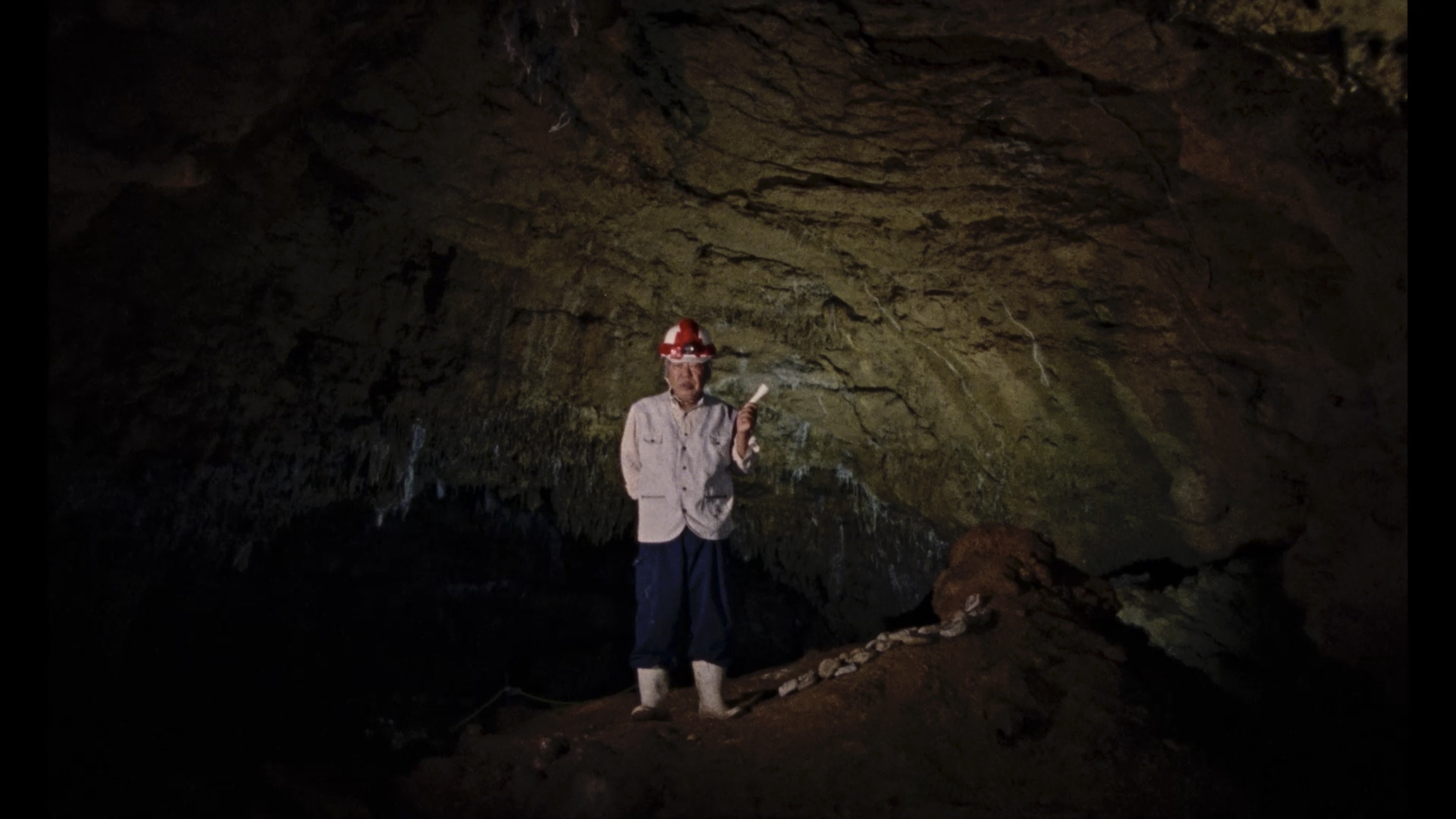 © 2023 Toyonaka Performing Arts Center / trixta
© 2023 Toyonaka Performing Arts Center / trixta
At first glance, it is not clear why GAMA and Radiance (both 2023) were screened as a pair in YIDFF 2023’s New Asian Currents.
In terms of subject matter, the films could not be more different. GAMA, a mid-length installment in director Oda Kaori’s Underground series, explores traumatic war memories in the underground caves of Okinawa. Radiance, directed by Hatano Shuhei, is a lighthearted, intimate video diary of family life during the COVID-19 pandemic. However, after much reflection, it seems that both films represent alternative approaches to a shared theme – time and memory.
Radiance is a film born out of the present. Without a preconceived goal, Hatano simply filmed whatever caught his attention – light and shadows, flowers, trees, wind, rain, telephone lines, food, bugs, and the musings of his young daughter. This stream of images is accompanied by occasional narration, which works to deepen the mystery and wonder, rather than clarify or establish narrative continuity. The film feels like flipping through a scrapbook of memories captured through the eyes of a child – fleeting, deeply felt, and always curious.

By contrast, GAMA is a film deeply grounded in the past. We enter a space where the flow of time slows to a trickle, quiet yet ever-present like water dripping down a stalagmite. The landscape of the cave is alien to us, and our only connection to the outside world is Matsunaga Mitsuo – a cave guide, storyteller, and volunteer working to recover human remains. Through Matsunaga’s narration, we are led to imagine the lives and hardships of people who have now passed on to other realms, as the cave remains hauntingly unchanged.
While the films begin as opposites – one frozen in the past, the other immersed in the present – the boundaries of time inevitably blur. In Radiance, recalling excerpts from the millennium-old Pillow Book, Hatano and his wife muse on the continuity of their contemporary lives with Heian-era ancestors. The “weight” of those past centuries, Hatano states, is “too much for my frail body to bear.” Similarly, after the birth of their second child, both parents cannot help but reflect on their own mortality. In GAMA, after spending more than half the film in dark caves, we step out into the light – into present-day Okinawa – where planes of war still roar overhead as if nothing had changed.
Radiance starts with the present and personal, only to find itself as part of a vast and unending stream of being. GAMA starts with the historical, only to discover that the past has never left us and our future is under siege. Whenever we try to isolate a memory, the continuity of time becomes irrefutable. There is no present without a past, and there is no life without a future. All we can do is watch, listen, learn, feel, and dream.
Aldo Schwartz
![ドキュ山ライブ! [DOCU-YAMA LIVE!]](http://www.yidff-live.info/wp-content/themes/yidff-live_2017/images/header_sp_logo1.png)

